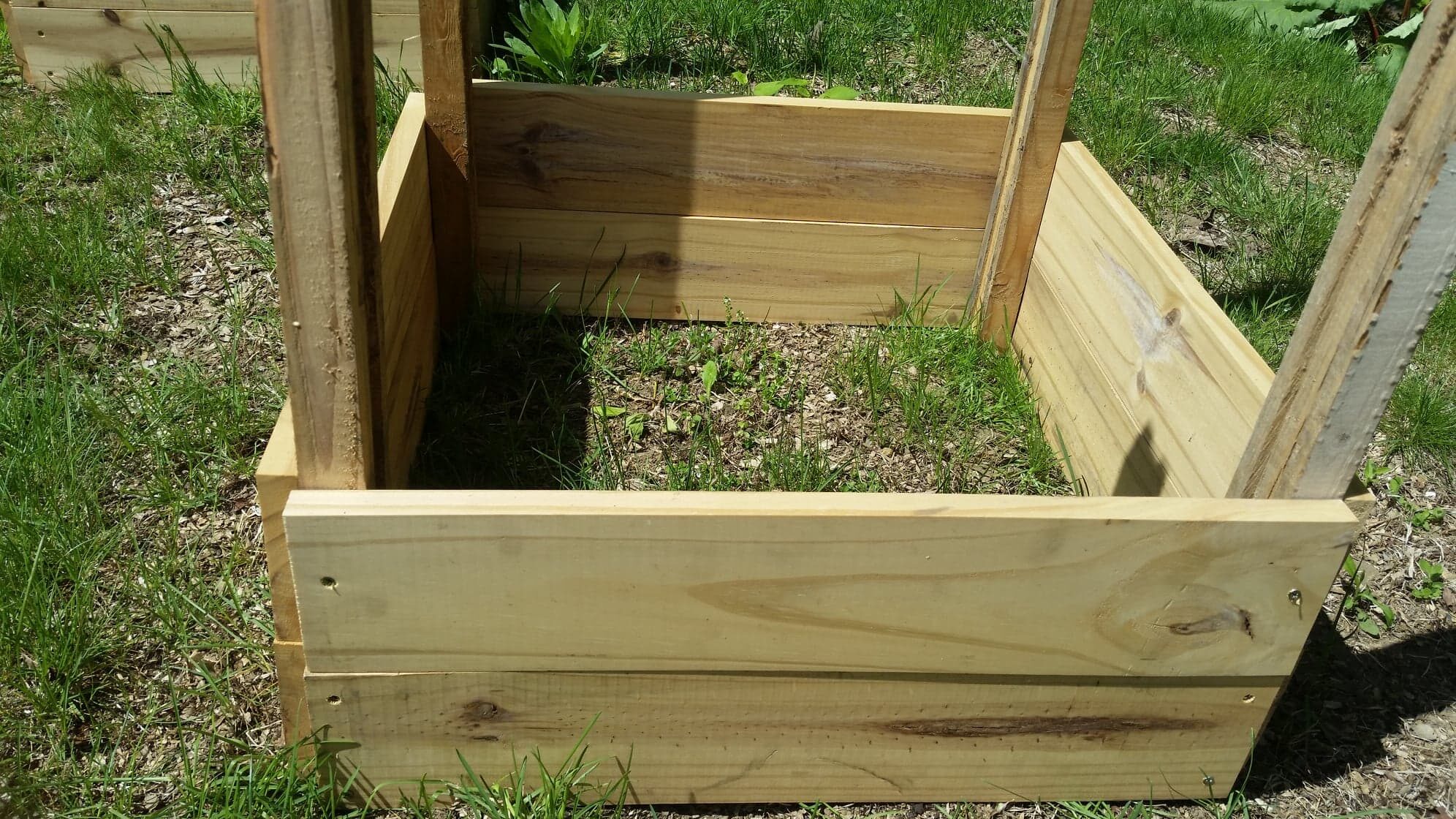Discover the world of vertical gardening with the DIY potato planter box, an innovative solution for growing potatoes in limited spaces. This comprehensive guide will lead you through every step, from constructing the box to planting, maintaining, and harvesting your potato crop.
Learn about the ideal potato varieties for planter boxes, companion planting techniques, and the benefits of crop rotation. With detailed instructions, expert tips, and a touch of scientific insight, this guide empowers you to maximize your potato yield and enjoy fresh, homegrown potatoes all season long.
Design and Construction

Constructing a DIY potato planter box is a simple yet effective way to grow potatoes in a space-saving and efficient manner. The design involves creating a sturdy and well-drained container that provides optimal conditions for potato growth and yield.
Materials and Dimensions
To build a potato planter box, you will need the following materials:
- Wood planks or plywood (1/2 inch thick or thicker)
- Screws or nails
- Drill or hammer
- Measuring tape or ruler
- Landscape fabric or plastic sheeting
- Soil and compost
The dimensions of the planter box will depend on the space available and the desired potato yield. A recommended size for a single-row planter box is 24 inches wide, 36 inches long, and 12 inches deep. This size allows for adequate spacing between potato plants and sufficient soil volume for proper root development.
Assembly Instructions
To assemble the planter box, follow these steps:
- Cut the wood planks or plywood to the desired dimensions.
- Assemble the sides of the box by attaching the planks or plywood together with screws or nails.
- Attach the bottom of the box to the sides, ensuring that it is securely fastened.
- Line the inside of the box with landscape fabric or plastic sheeting to prevent soil loss and promote drainage.
- Fill the box with a mixture of soil and compost, leaving a few inches of space at the top for watering and soil aeration.
Shape and Optimization
The rectangular shape of the planter box maximizes space utilization and allows for easy access to the plants. The depth of the box should be at least 12 inches to provide sufficient room for the potato tubers to develop and grow. By following these design and construction guidelines, you can create a durable and efficient DIY potato planter box that will enhance your potato growing experience.
Planting and Maintenance

Potato planter boxes offer an ideal environment for cultivating potatoes in limited spaces or raised garden beds. Understanding the optimal planting and maintenance techniques is crucial for maximizing yields and ensuring healthy potato growth.
Soil Preparation and Planting
The ideal time to plant potatoes in a planter box is during the spring, when soil temperatures reach at least 45°F (7°C). Choose well-drained, fertile soil with a pH between 6.0 and 6.5. Before planting, mix in organic matter such as compost or manure to improve soil structure and nutrient content.
Plant the seed potatoes with the “eyes” facing up, approximately 6-8 inches apart and 4-6 inches deep. Water thoroughly after planting.
Watering and Fertilization
Water regularly, especially during hot and dry weather. Potatoes require consistent moisture but avoid overwatering, as it can lead to root rot. Fertilize the potatoes every 4-6 weeks with a balanced fertilizer that contains nitrogen, phosphorus, and potassium.
Pest Control
Potato planter boxes are susceptible to various pests, including aphids, Colorado potato beetles, and wireworms. To prevent and control these pests, use organic methods such as companion planting, crop rotation, and neem oil. Regularly inspect your potato plants for any signs of pests or diseases and take prompt action to prevent further damage.
Potato Varieties and Companion Planting: Diy Potato Planter Box
Choosing the right potato varieties and implementing companion planting techniques can significantly enhance the yield and health of your potato planter box.
Suitable Potato Varieties
For planter boxes, compact and high-yielding varieties are recommended. Consider the following:
- Early varieties: ‘Red Norland’, ‘Yukon Gold’, ‘German Butterball’
- Mid-season varieties: ‘Russet Burbank’, ‘Kennebec’, ‘Katahdin’
- Late varieties: ‘Russet Norkotah’, ‘Majestic’, ‘King Edward’
Companion Planting, Diy potato planter box
Companion planting involves growing different plant species together to maximize space, enhance growth, and deter pests. Suitable companions for potatoes include:
- Legumes: Beans, peas, and clover fix nitrogen in the soil, benefiting potatoes.
- Alliums: Onions, garlic, and chives repel insects with their strong scents.
- Marigolds: These flowers release chemicals that deter nematodes, which can damage potato roots.
Crop Rotation
Crop rotation is essential for maintaining soil health and preventing disease. Avoid planting potatoes in the same location year after year. Instead, rotate them with other crops such as tomatoes, peppers, or corn.